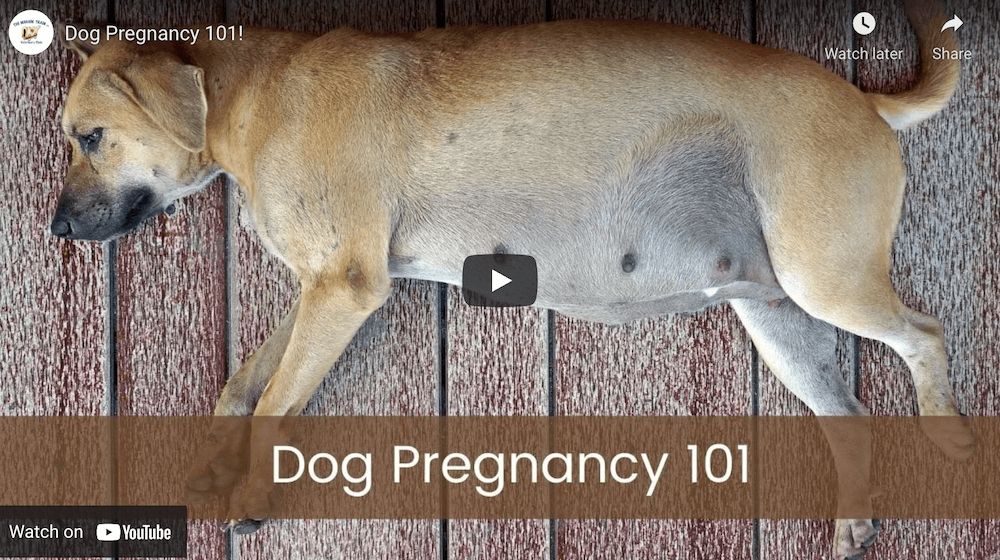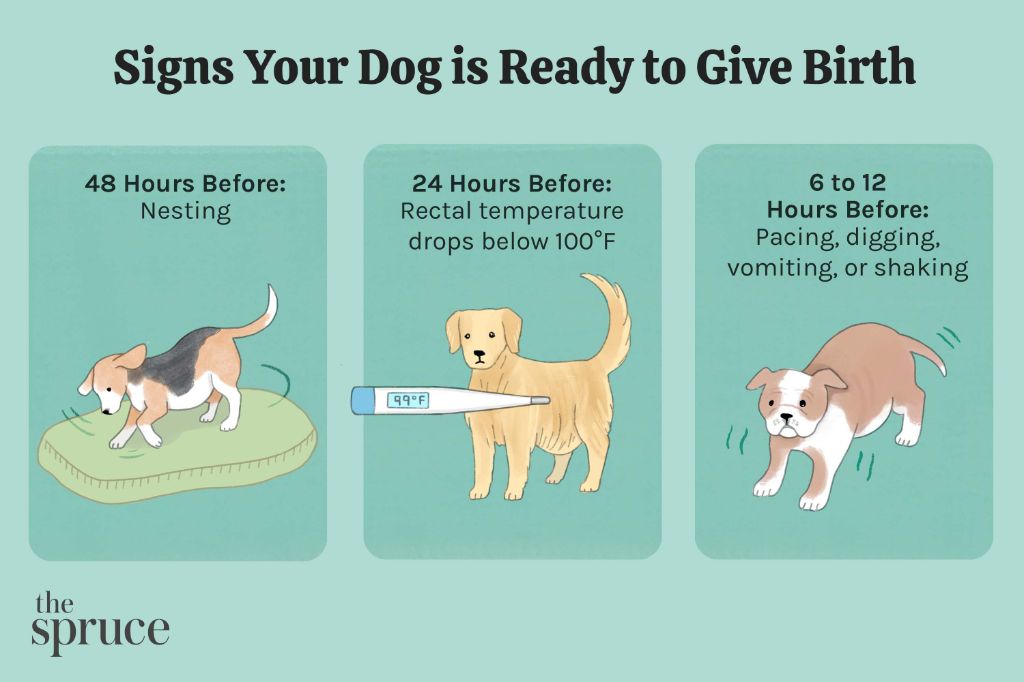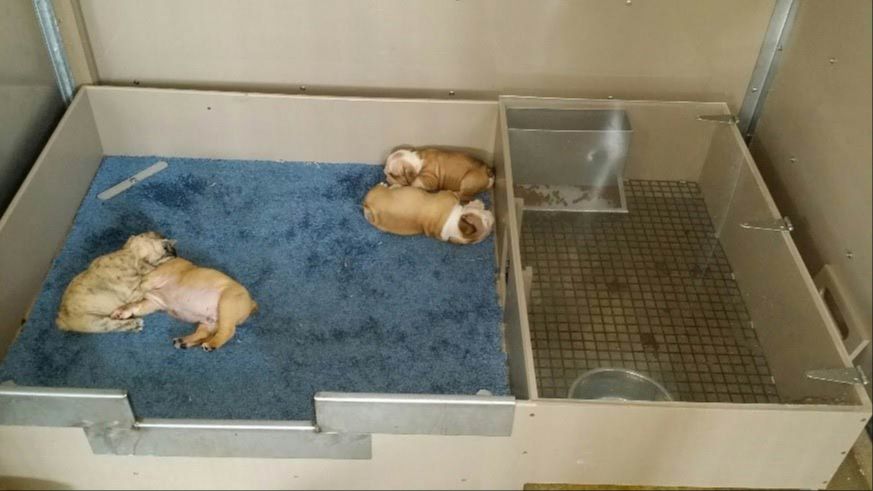Typical Canine Gestation Period
The typical canine gestation period lasts approximately 63 days from the time of conception. However, this can vary from 56 to 70 days depending on factors like the dog’s breed and size.
According to the American Kennel Club, smaller breeds tend to have slightly shorter gestation periods around 58-63 days, while larger breeds have longer gestation periods of 63-65 days. The AKC cites a study that found gestation periods for various breeds can range from 60 days for Chihuahuas to 66 days for Great Danes [1].
This variation is due to larger breeds requiring more time for fetal development. The AKC states that despite some size differences, most dogs deliver puppies around 63 days after mating.
Why 9 Months for Humans?
The length of human pregnancy is approximately 9 months, though it normally ranges from 38-42 weeks from the last menstrual period (LMP) to birth. This gestational period seems calibrated to allow optimal growth and development of the human brain outside the womb. Human babies have the largest brains relative to body size compared to other primates. Our big brains demand a longer gestation period for proper maturation.
For example, chimpanzee pregnancy averages 33 weeks from LMP to birth while gorillas average about 37 weeks. The average human pregnancy of 40 weeks allows more time for the brain to develop, helping human infants be neurologically more mature and capable at birth compared to other primates (source). This longer gestation provides a developmental advantage despite the relative helplessness of human newborns.
The constraint on making pregnancy longer appears to be maternal metabolism. Humans are already pushing the limits of the mother’s ability to provide oxygen and nutrients to the fetus. Going beyond 9 months poses significant health risks and dangers of fetal mortality (source).
Dog Pregnancy Stages
The typical canine pregnancy lasts 63 days from conception to delivery. It is divided into 3 trimesters of 21 days each.
The first trimester (days 1-21) includes fertilization, implantation, and the start of embryo development. The embryos descend into the uterus around day 12-16. Signs of pregnancy like appetite changes and morning sickness may be noticeable.
The second trimester (days 22-42) marks the fetal stage as the puppies grow rapidly. Their bones begin to harden around day 35 and heartbeats can be detected by day 25. The pregnant dog’s abdomen will swell noticeably.

The third trimester (days 43-63) finishes development in preparation for birth. The puppies gain significant weight and reposition themselves for delivery. Mammary gland development peaks and milk production begins around day 58. Contractions and nesting behavior start around day 63.[1][2]
Signs of Pregnancy
There are several physical and behavioral changes that indicate a dog is pregnant. These signs generally become noticeable around 3-4 weeks after mating.
Early signs in the first month include morning sickness, increased appetite, and swelling or enlargement of the nipples. The dog’s belly will start expanding around week 4 as the puppies grow. Weight gain, abdominal enlargement, and nesting behaviors emerge later in the pregnancy.
Behavioral changes can include restlessness, moodiness, loss of appetite, and mellowness. Some dogs exhibit motherly behaviors like nesting and milk production. Clear vaginal discharge may be present around 1 month after mating.
As dogs near delivery around 63 days, they refuse food, pant frequently, and the temperature drops 1-2 days before whelping. Detecting pregnancy early on can be difficult, so brining the dog to a vet for confirmation is recommended.

Prenatal Care
Proper prenatal care is extremely important for ensuring the health of a pregnant dog and her puppies. Regular veterinary visits allow the vet to monitor the dog’s health and catch any potential issues early. Ultrasounds are commonly performed during pregnancy to get an accurate count of puppies, determine their size and position, check for abnormalities, and determine the delivery date.
Nutrition is also a key part of prenatal care. Pregnant and nursing dogs require 1.5-2 times more calories than normal. High quality puppy food or a special whelping diet should be fed starting in the last third of pregnancy when the puppies are growing rapidly. The food should be highly digestible with more calories, protein, calcium, and other nutrients. Supplements like folic acid and iron may also be recommended. Fresh water should always be available.
Preparing for Delivery
Proper preparation before your dog gives birth can help ensure the delivery goes smoothly. Here are some tips on getting ready for whelping:
You’ll need to gather certain supplies to have on hand during labor and delivery. These include clean towels, dental floss or unwaxed thread for tying off umbilical cords, scissors, puppy formula and bottles in case you need to hand-feed, and a rectal thermometer to monitor your dog’s temperature. It’s also a good idea to have your veterinarian’s number handy in case any complications arise.
Set up a designated whelping area in a quiet room one week before your dog’s due date. This space should be warm, draft-free, and easy to clean. You can buy a special whelping box or make your own using a large cardboard box lined with puppy pads and soft bedding. The box should be big enough for your dog to lie down and give birth comfortably. Limit access to this space as her due date approaches so she can feel safe and relaxed.

Make sure the whelping area is stocked with everything your dog will need during the birthing process. This includes food and water bowls, a heat lamp or heating pad to keep newborn puppies warm, and clean towels. Monitor your dog closely as her due date nears and be prepared to act quickly if she goes into labor sooner than expected.
With the right supplies and setup, you’ll be ready to support your dog and welcome the new puppies when her time comes!
The Delivery Process
Labor and delivery can be an anxious time for dog owners. Here’s what to expect during this critical period:
Early labor signs include restlessness, pacing, shivering, and panting. As labor progresses, contractions become more frequent and noticeable. Your dog may start nesting by collecting blankets, towels or newspapers. She may also lose her appetite and vomit.1
During active labor, contractions are 2-30 minutes apart. You may see vaginal discharge and your dog straining to push out puppies. Puppies are delivered every 30-60 minutes. Call your vet if straining lasts over 30 minutes without a puppy or if labor stops before all puppies are delivered.2
After delivery, the mother will lick puppies to stimulate breathing and cut the umbilical cord. She may eat the afterbirth. Keep an eye on bleeding. Let the mother bond with puppies for a few hours before interfering.
Call your vet immediately if you notice excessive bleeding, green discharge, no milk production or other complications. With support, your dog can have a safe delivery.
Caring for Newborn Puppies
Caring for newborn puppies in the first few weeks of life is critical to their health and survival. Here are some key tips for keeping puppies warm, clean, and fed in their vulnerable newborn stage:
Newborn puppies cannot regulate their own body temperature, so it’s crucial to keep the environment warm. Provide a whelping box or enclosure with warm bedding. The temperature should be between 85-90°F for the first week, then can be gradually reduced by 5 degrees each week. Newborns will huddle together for warmth as well.

Keep the puppies and environment very clean to prevent illness. Change bedding and wipe puppies with a warm, damp cloth when soiled. Check for fleas/ticks and trim umbilical cords if still attached. Disinfect the whelping area daily.
Feed newborn puppies colostrum for the first day, then transition to milk replacement formula. They should nurse every 2-3 hours for proper nutrition. Weigh puppies daily to ensure they are gaining weight. Signs of dehydration or low weight require veterinary attention.
Monitor puppies closely for any signs of respiratory distress, hypothermia, or other health issues requiring emergency care in the first few fragile weeks. Keep regular veterinary check-ups during this period.
With vigilant care and attention, newborn puppies can thrive as they transition from delicate, fully-dependent newborns to active, growing puppies.
Common Complications
While most dog pregnancies go smoothly, there are some potential complications to be aware of. One of the most common issues during labor is dystocia, where a puppy gets stuck in the birth canal due to its size or position [1]. This can prevent the puppy from being delivered naturally. Other complications include stillbirths, uterine inertia where contractions are weak, and eclampsia or low calcium levels that cause seizures [2].
Signs of an emergency during labor include strong contractions for over an hour with no puppy produced, a foul-smelling vaginal discharge, no contractions for more than 4 hours, visible swollen or protruding tissue, or green-black discharge indicating placental separation [3]. If you notice any of these, contact your veterinarian immediately as it likely requires an emergency C-section.
After birth, watch for signs of hemorrhaging like continuing bloody discharge or pale gums. Also monitor the mother for signs of fever, lethargy, reduced appetite or vomiting, which may indicate an infection or uterine inflammation requiring medical treatment.
Takeaway
Dogs have pregnancies lasting around 9 weeks, much shorter than the 40 weeks for human pregnancies. This major difference in gestation periods is due to faster growth rates and developmental processes in dogs compared to humans. While human babies require 40 weeks in the womb to fully develop, puppies can be ready for birth in about 2 months. However, just like for humans, providing proper prenatal and postnatal care for the mother dog and puppies is crucial. Making sure the mother dog receives quality nutrition, exercise, and veterinary checkups during pregnancy sets up the puppies for success. Caring for the mother and newborn puppies carefully in the days and weeks after birth helps them thrive through the initial critical period.